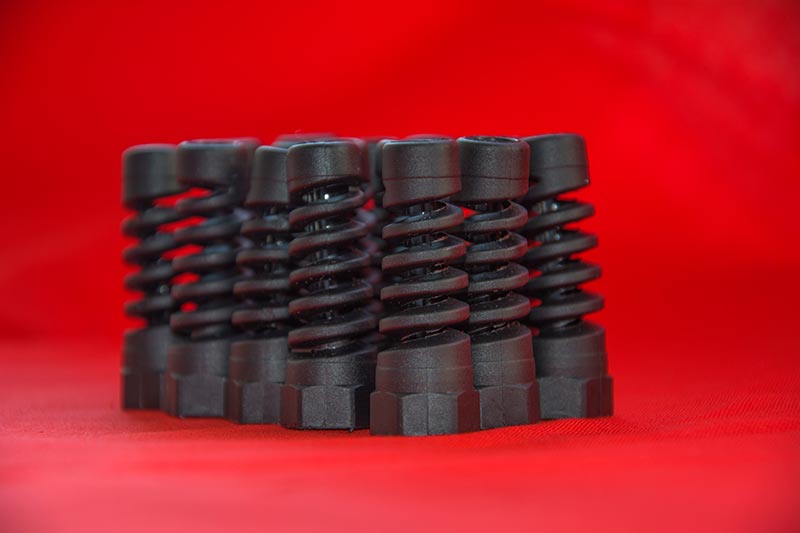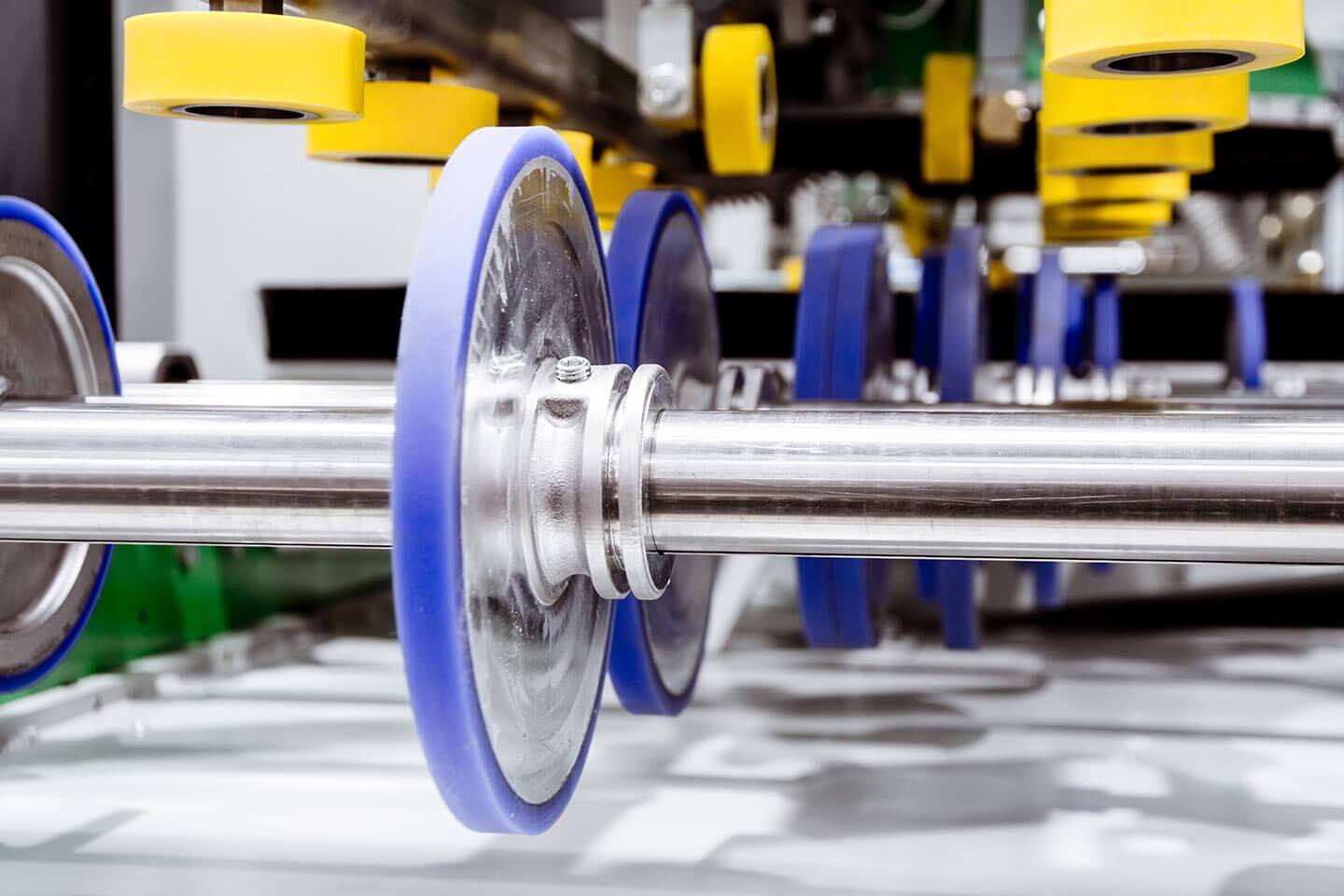
Springs are simply devices that absorb energy when compressed and release energy during expansion. As basic as springs are, their component function in machinery and equipment are essential to manufacturing. Springs come in a variety of types and can serve a variety of purposes. Steel alloys are the most commonly used spring material, but steel is not appropriate for all applications. For this reason, some springs are made of urethane. Since each application is unique, below are three key questions to ask when designing urethane springs to avoid costly design mistakes.
1. Is urethane a good fit for my spring application?
Material selection is one of the first considerations when designing a spring. As noted above, springs are typically fabricated from steel but there are some applications where metal is not a good fit. For example, urethane springs are ideal for environments where corrosion, vibration, and magnetism prevent the use of conventional steel springs. Where steel and rubber springs fail, urethane springs excel.
Urethane springs are used in a variety of mechanical systems and industrial applications, including in automotive suspensions and clutches, locomotive suspensions, elevators, escalators, and shock absorbers. They have also proven to be the most efficient and reliable compression material for punching, stamping, and drawing dies. They can typically maintain their effectiveness and withstand extreme temperatures. Urethane springs also deliver excellent shock absorption, chemical and abrasion resistance, load bearing abilities, and longevity.
Additionally, there are innumerable types of mechanical springs, including extension springs, torsion springs, constant springs, variable springs, flat springs, machined springs, serpentine springs, and wave springs, just to name a few. However, not all springs can be manufactured out of urethane, nor should they. Urethane is most commonly used for cylindrical, non-coil springs, like the following:
- Die: urethane die springs are critical in die-cutting operations. Steel springs can fracture during the die-cutting process and potentially injure machine operators. Urethane die springs are non-marring, quiet, and can handle higher pressures than their steel counterparts, resulting in a safer work environment for machine operators.
- Compression: a compression spring is a helical spring that offers resistance to a compressive force when applied axially. Urethane compression springs can be made in the shape of tubes, cylinders, rectangular pads, and sheets. These springs squeeze together to create a load, this can be found in suspensions.
Does your project involve corrosion, vibration or magnetism?
Contact our team to see how your application may benefit from our custom urethane springs.
2. What are the operating conditions of the spring?
Once you have determined that a urethane spring is a good fit for your application, you need to determine the operating conditions of your spring. In addition to understanding the necessary spring dimensions such as height and diameter, there are a few key parameters to consider when designing a urethane spring: deflection, load, and type of cycle.
Deflection is how the spring responds when loaded, and is often expressed in a rate of lbs/inch. For load, it is important to determine the load (weight) the spring is expected to bear. Each spring has a maximum amount of load it is able to carry and the spring will break or permanently set if the maximum load is exceeded. An understanding of load and deflection will help determine the maximum load. The type of spring cycle is also important to understand. For example, consider if the spring will work continuously or intermittently, will the load be applied uniformly, and will the load rate be rapid or slow. These are some of the operating conditions that must be evaluated when designing a urethane spring – and these are, of course, not an exhaustive list.
3. What type of polyurethane should be used?
Once you have determined the operating conditions and load expectations for your spring, you need to choose the type of polyurethane for your spring. Selecting the right urethane material can sometimes be overwhelming. First, the conditions identified in the step above will be instrumental in determining the best polyurethane for your application. Second, it is valuable to work with a trusted partner, like PSI Urethanes, that has the proven experience and know-how to guide clients through the selection process to ensure the right material is chosen.
Let’s briefly talk chemistry in order to better understand our urethane options. Polyurethane is an elastomer that is formed by the reaction of isocyanate and polyol. There are two common types of polyols: polyether and polyester. The properties and performance of the polyurethane created during the reaction depend on which polyol is used. For example, esters often exhibit greater abrasion and chemical resistance whereas ethers provide excellent shock absorption and are more UV and wear resistant. Additionally, esters can endure higher temperatures for longer periods of time while ethers are often the best choice for extreme cold temperatures.
When designing a urethane spring, it is crucial to understand the operating conditions and desired properties of the urethane spring in order to avoid a costly design mistake.
About PSI Urethanes
With over 50 years of experience delivering the highest quality urethane products, PSI Urethanes stands unequaled in helping companies in hundreds of industries around the world apply urethane products to their critical business applications. Since 1966, through our own independent research and activity in the Polyurethane Manufacturers Association, PSI Urethanes has stayed on the leading edge of urethane technology – including developing advances in new materials, comprehensive designs, and processing technologies. Today we are among the most respected and trusted suppliers of custom cast urethane products.
We operate from our 45,000-square-foot manufacturing facility in Austin, Texas, which houses an extensive stock of polyurethane products. Our fully equipped manufacturing facility includes a versatile range of processing machinery, which allows us to work on unique, one-of-a-kind projects, as well as high volume components. Our in-house engineering, tooling, and custom mold shop, produces custom and stock production orders with exceptionally fast turn-around times. From conception to prototyping, to final production runs, our technical representatives and design engineers will work closely with your staff to meet your critical tolerances and specifications. You are guaranteed to receive experienced, professional, and personalized service from the first contact through your on-time delivery, with complete confidentiality and dedication to protecting your good name.
PSI Urethanes specializes in custom urethane projects. Custom urethane springs are commonly cast in solid urethane, or in tube form. Contact us today to see how we can help with your next project, or give us a call at 1-800-888-5156.

